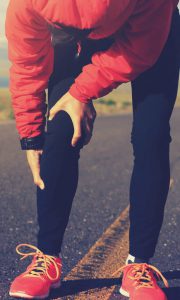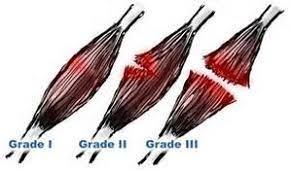What is your Shin?
So let’s start off with the shin – you know that area that isn’t quite your ankle, but not quite your knee. The bit between the two.
A brief overview:
The shin is home to two bones as seen on the right: The Fibula (Smaller Bone) and the Tibia (Bigger Bone). The Tibia most often being referred to as the Shinbone.


As can be seen in the picture on the left, there is far more to this area than the 2 bones sitting between your knee and ankle. There are a multitude of muscles and connective tissues within this area. Most commonly known here would be the “Calf” muscles on the back of the leg. Which in itself are made up of different muscles, the most common being the Gastrocnemius (The bigger meatier muscle) and the Soleus (Not so meaty, deeper muscle).
Why does this matter?
Well, with the different structures that are here. That means that in theory at least, there are multiple structures that can cause pain and/or be injured.
What are the most common issues?
One of the most common issues/injuries that can be problematic here is what is typically referred to as “Shin Splints”.
Shin splints being an umbrella term for pain along the shin, much like “sciatica” of the lower back/hip. True shin splints or also known as Medial Tibial Stress Syndrome (MTSS) is where the pain comes along the front/inside of the shin bone. MTSS is seen often in Dancers, recent army recruits, and running populations. It can hit the weekend warrior and the upcoming athlete.
Shin splints will present usually with the athlete/exercise enthusiast complaining of a feeling of pain and tenderness along the inner side of the Tibial bone (Bigger Shin Bone from Earlier). At first it may only become apparent when starting off on your run/exercise and will ease off when you stop the bout of exercises. If however left ignored and untreated it may become a continuous pain, and lead to a stress fracture along the back of that tibial bone.
This is usually associated with an increase in training intensity, or beginning a new exercise regime. This increase in activity can lead to an increased activity of the muscle tissue, which affects the tendons, and also the bone structures they attach to – leading to that shin bone pain.
Calf Strain
Another common one we would see here would be a “Calf Strain”
These are your more simplistic muscle injuries – for want of a better phrase and can affect any of the calf complex muscles.
There are generally 3 levels to this injury. 1 being the least severe; 3 being the most severe and in some cases – but not all will require surgery.

These typically occur in active populations who will be in mid exercises and feel a “tightening”, “pulling” or sometimes a “pop” sensation. In milder cases, people can continue with their exercise, but pain and weakness will set in after a period of rest. In severe cases leading them to be unable to continue at the time of injury to their activity, unless purely running on adrenaline.
When this happens there is usually a degree of damage to the muscle tissue. Muscle fibres are like a series of straws or straight elastic bands that are bundled together and wrapped in cling film. Like when you bite into a chicken breast you might get the odd stringy bit, that is a muscle fibre and you’ll see it running in the same line as the next one.
Recovery times for these injuries will vary. Milder grades will recover within a period of 2-6 weeks. More severe cases will take longer, up to a few months especially if surgical input is warranted.
This sounds like me…what do I do now?
This is where we at APC Physio and Sports Clinic step in and help.
Initially we would advise you stop doing the exercises that brings about the pain temporarily. There is nothing to be gained from the “Ah I’ll run it off” approach in this case.
We will listen to your story, your injury history and also your body. We will go through a thorough assessment, everything from basic injury history, to a specific movement analysis. This is where the nitty gritty comes in on our part to help you help yourself and guide you through your rehabilitation process to reach your goals – be that running a marathon, or getting back to 5-aside football. It might be something simple as we may need to guide your progression from doing little to no training to running a 5km. Or it might be a multitude of hands on release of structures, advice on training loads, equipment advice and perhaps changing your training regime to allow for healing.
The next step you take with this, should be the first step in the right direction.